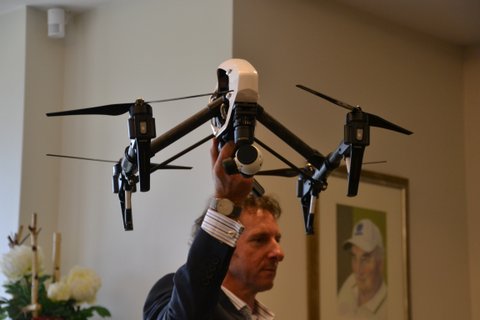Cine Bird ....Remote Piloted Aircraft
Posted
on Apr 28, 2015
 |
 |
 |
The prospect of a talk on “Drones” was thought provoking. Noel McInnes introduced two principals from Cine Bird , Darren Eger and Marcus Macquire and opened up a fascinating session on small Remote Piloted Aircraft (RPA) Systems and their evolving use.
The two took us through the options, from the top end full scale military planes to match boxed sized units used by infantry to check out the contents of say some hostile room. A common trait of all is that they are airborne camera carrying devices by which a remote pilot can position the “aircraft” to observe selected areas. The nature of the camera payload can be varied, it can be Infra Red sensitive to identify heat emitting live items (people, crops) or high resolution optical units for surveillance work , or in the case of the prime focus of Cine Reid movie cameras for film and TV reporting activities.
We were introduced to “aircraft” designed to be carried in a suit case and moreover moderately priced perhaps $10,000 (compare with a helicopter!) It is rotor (multiple) driven with a lithium battery power source and current flight time up to about 30 minutes. The unit on show (see pic above) attracted the audience (especially our aviation enthusiasts) as at worst a wonderful toy. Most however saw its highly functional nature as a camera carrying device, and this was evident and amplified as we watched a video clip of some fly over scenery and events which Cine Bird had assembled for demonstration.
These units have an onboard programmable GPS system for location, gyroscopic stability and orientation guidance and a control system which developed from the practices first used in those TV hobby games. There a player could remotely maneuver an image on the TV screen with a hand held controller. One communicated with the screen by relevant electromagnetic transmissions.
The many advantages for film work , namely cost effective, safe, transportable, and flexibility has seen their widespread use. As is common with new technology obligations and rules have needed to be developed too. Under the governance of the Civil Aviation authorities, there are line of sight demands, altitude and regional limits.
Applications have extended to commercial applications in agriculture, construction, and transport; the law enforcement and emergency service agencies, and of course the paparazzi! The latter doubtless has prompted issues of ethical standards, privacy and legal considerations.